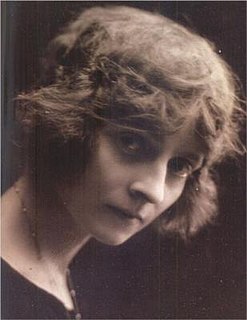Related Research Articles

Calouste Sarkis Gulbenkian, nicknamed "Mr Five Per Cent", was a British-Armenian businessman and philanthropist. He played a major role in making the petroleum reserves of the Middle East available to Western development and is credited with being the first person to exploit Iraqi oil. Gulbenkian travelled extensively and lived in a number of cities including Istanbul, London, Paris and Lisbon.

The Calouste Gulbenkian Museum, also known simply as the Gulbenkian Museum, is a major encyclopedic art museum in Lisbon, Portugal, in the civil parish of Avenidas Novas. As part of the Calouste Gulbenkian Foundation, one of the wealthiest foundations in the world, the Gulbenkian Museum houses one of the largest private collections of art in the world. It encompasses the art of the world from antiquity forward, and was the private collection of a single man, oil magnate Calouste Gulbenkian.

Amadeo de Souza-Cardoso was a Portuguese painter.

The Calouste Gulbenkian Foundation, commonly referred to simply as the Gulbenkian Foundation, is a Portuguese institution dedicated to the promotion of the arts, philanthropy, science, and education. One of the wealthiest charitable foundations in the world, the Gulbenkian Foundation was founded on 18 July 1956 according to the last will and testament of Calouste Sarkis Gulbenkian, a Portugal-based oil magnate who bequeathed his assets to the country in the form of a foundation.

Júlio Artur da Silva Pomar, GOL, GCM was a Portuguese painter and visual artist. He was often considered the greatest Portuguese painter of his generation.
António Dacosta was a Portuguese painter, poet and art critic and a pioneer of the surrealist movement in Portugal.
Marcelino Macedo Vespeira was a Portuguese painter and graphic artist. A leading figure in the surrealist movement in Portugal, Vespeira built a long and diversified work. It emerged in the mid-1940s in the context of Portuguese neo-realism, it reached a high point in the surrealist and intensely personal works made between 1948 and 1952; after that he went through abstractionism to return, in more recent decades, to the themes and forms from his surrealist period.
Fernando Luís Cardoso de Meneses de Tavares e Távora, ComSE, simply known as Fernando Távora, was a renowned Portuguese architect and professor.

Carlos Botelho was a Portuguese painter, illustrator, comics artist, political cartoonist, satirist and caricaturist, whose works are shown at the Chiado Museum and at the Modern Art Centre José de Azeredo Perdigão / Calouste Gulbenkian Foundation, in Lisbon. Botelho was one of the most relevant Portuguese artists of his generation.
Manuel Botelho is a Portuguese artist. He lives and works in Estoril, Portugal, and teaches at the Faculty of Fine Arts, University of Lisbon.
António Palolo was a Portuguese artist and painter.

The Gulbenkian Park also known as Gulbenkian Garden is located in Lisbon, Portugal. It was created in 1969 and is part of the cultural center where the headquarters of the Calouste Gulbenkian Foundation, Gulbenkian Museum and the José de Azeredo Perdigão Modern Art Centre are situated enriching the cultural importance of the garden.

Álvaro Perdigão was a Portuguese painter.
Alberto Carneiro was a Portuguese artist.
Fernando Pernes was a Portuguese essayist, professor and art critic.

Adriano Sousa Lopes was a Portuguese Modernist painter and engraver who worked in a wide range of genres.

Greyhounds is a painting by Amadeo de Souza Cardoso, from 1911.
Rui Paes is a painter, illustrator and muralist born in Mozambique, residing in the UK.
Sarah Affonso, the art name used by Sara Sancha Afonso, (1899–1983) was a Portuguese artist and illustrator who was brought up in the Minho Region in the north of the country. Adopting a modernist style, she painted scenes of rural life in her childhood province and portraits of peasant women. Although she exhibited in Paris in the late 1920s, her most important paintings date from the 1930s. She was largely forgotten until her work was presented in 2019 at Lisbon's Calouste Gulbenkian Museum.

Mily Possoz, was a Portuguese artist of Belgian origin. She was one of the most prominent figures of the first generation of Portuguese modernist artists.
References
- ↑ "Visita privada às oficinas dos artistas". www.cmjornal.pt (in Portuguese). Retrieved 2019-10-08.